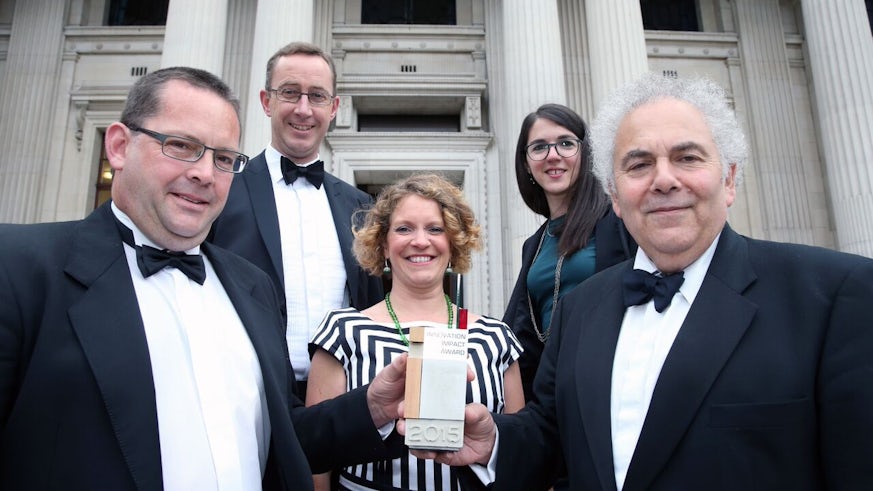Low energy ‘smart house’ wins innovation award
18 June 2015

Experts who designed a smart house that produces more energy than it uses have been honoured at this year's Cardiff Innovation and Impact Awards
In a bid to meet tough targets for zero carbon housing, Professor Phil Jones and his team from Cardiff University's Welsh School of Architecture developed the first low-cost energy positive house.
Designed and constructed as part of the Wales Low Carbon Research Institute's (LCRI) SOLCER project, the house is the first to combine reduced energy demand, building integrated renewable energy supply and energy storage.
Professor Jones said: "We are proud of our house, and delighted to win this Award. Governments across the world, including the UK, have set a target of achieving zero carbon housing by 2019. We have to rise to that challenge and come-up with innovative new ways to build the homes of the future."
The 'Innovation in Sustainability' Award, sponsored by leading law firm Geldards and IP Group, recognises the team's outstanding contribution to the environment.
The SOLCER House uses a number of technologies and methods developed by the LCRI's Low Carbon Buildings Research Programme.
The house was built with high levels of thermal insulation reducing air leakage. It uses an innovative energy efficient design which includes low carbon cement, structural insulated panels (SIPS), external insulated render, transpired solar collectors and low emissivity double glazed aluminium clad timber frame windows and doors.
The south facing roof incorporates glazed solar photovoltaic panels, fully integrated into the design of the building, allowing the roof space below to be lit naturally lit and removing the cost of bolt-on solar panels.
Solar generation and battery storage power the combined heating, ventilation, hot water and electrical systems, which include appliances, LED lighting and heat pump.
Professor Jones added: "Now the house has been built, our key task is to ensure all of the measures we have put in place are monitored to ensure the most energy efficient use. We'll use this information to inform future projects with the aim of ensuring that Wales remains at the heart of the development of a zero carbon housing future."
The research has highlighted design, planning and installation in the "real world". The team worked with low carbon technology companies, including SIPs Wales, who designed and supplied the SIPs ecopanels to incorporate these innovative new technologies and are now using SOLCER House methods in their future designs.
Work on the low energy smart house has been recognised at the recent Construction Excellence in Wales Awards. Young Achiever of the Year went to researcher Ester Coma-Bassas, in the Welsh School of Architecture, who helped develop the SOLCER project.
Andrew Davies, Director, SIPs Wales, commented: "What we have achieved here, with this technology, will become mainstream construction in a few years' time – and I'm very proud to be involved in it."
The story of
the SOLCER house will be documented in academic journals and conferences, the project was supported by the European Regional Development Fund (ERDF).
The award was presented to
Professor Phil Jones; Dr Joanne Patterson; Ester Coma (Welsh School of
Architecture) and Andrew Davies (SIPs Wales) by Andrew Evans, Partner, Geldards
Law Firm.
